What and how to feed a pear in spring?

The pear is a useful garden tree. So that it can fully grow and develop, give a rich harvest, various dressings should be introduced in a timely manner. Today we will talk about how to properly fertilize such vegetation in the spring.
Terms of feeding
The first time to feed the pear tree is necessary directly when planting seedlings... The next top dressing is done in the spring of next year, by which time the supply of nutrients will begin to dry up.
When the pear becomes stronger, begins to bloom, bear fruit, three spring dressings should be carried out: in early spring, before the young buds open, before the flower buds open, after the flowering process, which often occurs in April.
Moreover, this fertilization scheme is typical for different regions, including the Moscow and Leningrad regions.
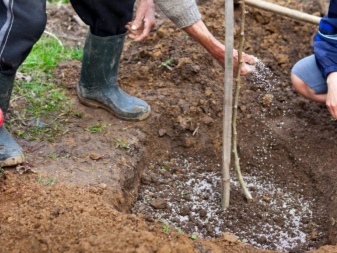
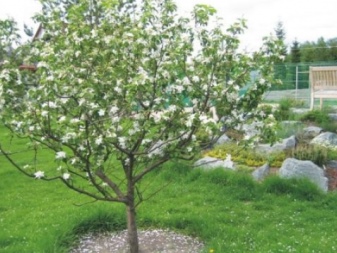
How to fertilize a pear?
You should decide in advance which fertilizers are best for your pear. First, let's take a look at their main types.
- Nitrogen... Nitrogenous components are used in the spring to increase the volume of the crown, they will make it strong and healthy. The lack of this element can cause the leaves to turn yellow and fall off quickly. But at the same time, an excessive amount of such a substance can also greatly harm fruit plants. This can lead to the accumulation of a large amount of harmful nitrates in the fruit, to the appearance of burns on the root system, as well as to too strong growth of shoots. Effective nitrogen fertilizers include sodium nitrate, ammonium nitrate, and urea. The latter is a concentrated composition, it can be used for prophylaxis. Nitrogen compounds can be applied after winter.
- Phosphorus... This element contributes to a better assimilation of nitrogen-containing components. In addition, full growth and development of the root system are impossible without phosphorus. It is quite difficult to find such a component in an accessible form in nature. As a rule, gardeners use special ready-made phosphorus components for their fruit crops and carry out root and foliar feeding with them. It is not uncommon for gardeners to purchase special phosphate flour.
- Potassium... This element is especially important for young plants. He ensures their growth and development. Potassium is also necessary for adult plants, as it allows them to maintain their immunity, increases their resistance to frost and drought. Often, various components with potassium are used for foliar feeding.
- Complex fertilizers. Such formulations contain several different nutrients and mineral supplements at once. They are sold ready-made in specialized stores. Among the most popular options are nitrophoska, diammophos and nitroammophos. They also contain magnesium and sulfur. Complex substances can stimulate plant growth, and also help to strengthen their immunity.
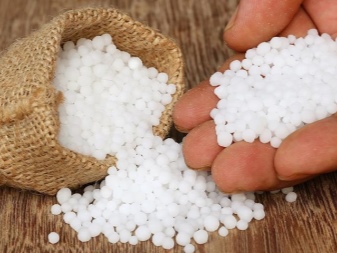
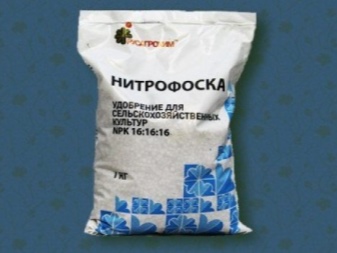
In addition to the above fertilizers, there are various organic substances for spring feeding, which also need to be fed to such crops.
- Manure. It is a complete organic fertilizer containing all the components necessary for tree growth. Ammonia is also present in the fresh mass, so its use in the soil can harm the root system of vegetation, this applies primarily to young trees.It is categorically impossible to apply a fresh mixture under the pears; only rotted manure is used.
- Bird droppings. Such an organic fertilizer for culture contains nitrogen components; it is used exclusively in the spring period of the year during the active growth of pears. Moreover, only the soil in the near-trunk area should be fertilized. Such dressing in fresh undiluted form is not used, as it can severely damage the root system. Poultry droppings are pre-diluted with water and fermented. Remember that during improper storage, fresh droppings can easily turn into hazardous ammonia, so you should only take dry masses.
- Wood ash. Such organic feeding can significantly increase the acidity level of the soil. It is often used instead of potassium substances. In addition, wood ash contains various useful microelements and macroelements necessary for the growth and development of fruit crops.
It should be remembered that the choice of suitable fertilizers will also depend on the region in which the pear grows.
So, for the crops that grow in the Leningrad region, various organic and mineral additives will be necessary. Pears that grow in the Moscow region are most in need of formulations with a high content of potassium and phosphorus.
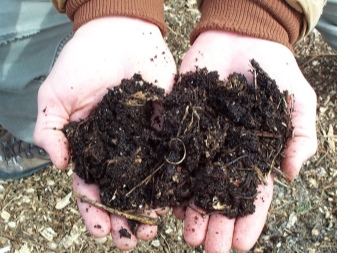
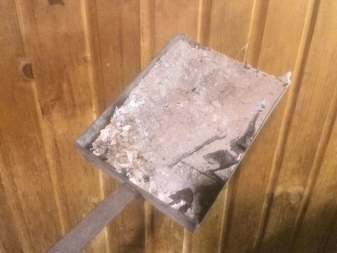
Fertilization stages
Next, we will take a closer look at each stage of pear feeding in the spring season.
Before bud break
During this period, it is better to add humus (1 or 2 buckets) to the soil, as well as fertilizers containing nitrogen components (35-40 grams), potassium and phosphorus additives (about 60 grams). If the soil is highly acidic, then a small amount of lime or chalk is additionally laid.
Fertilizers should be applied after pruning. During this period, the soil will still be quite moist due to the melted snow masses, so you can use various mineral granules, they are simply scattered in the near-trunk area. There they will gradually begin to dissolve. After that, they are deepened into the top layer of the earth; this can be done with a rake.
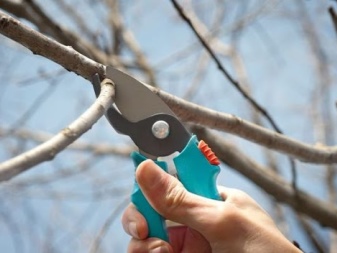
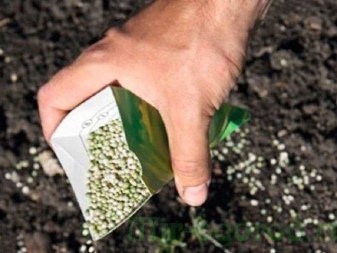
Sometimes in the near-trunk area, small pits are preliminarily formed with a depth of no more than 10 centimeters... After that, they retreat from the trunk by about 50-60 cm and begin to carefully scatter the nutrient granules, all this is lightly sprinkled with earth at the end.
To add organic compounds, you will need to mulch the soil. In this case, humus, compost, ash are used. Under the influence of atmospheric precipitation, all this will gradually dissolve. The introduced organic elements will enter the plant root system in small portions over a period of time.
At this stage, it is permissible to use bird droppings and manure. But they must first be diluted with water and used only in this form. One pear tree will have one bucket of this composition.
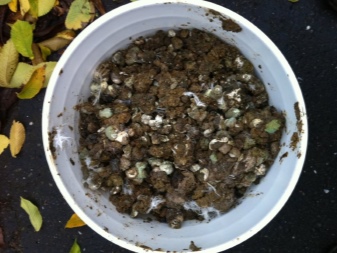
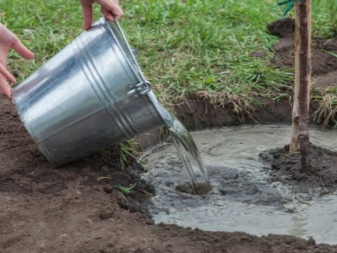
Before flowering
At this stage, fertilizers should be used, which contain potassium and phosphorus, which will ensure the appearance of large and sweet ripe fruits.... But at the same time, it is better to dilute such components with water in advance and add them in this form.
Most often, potassium nitrate, potassium sulfate, wood ash, ammophos are taken before flowering.

During flowering
During this period, complex formulations will be the best option.... You can purchase products such as "Super Master", "Agromaster", "Fasco"... But when choosing the right product, it is necessary to take into account the type of soil.
And also you will need to make mineral supplements. Before that, the land is watered abundantly with clean water. They do this in order to avoid the appearance of burns on the vegetation.
It is recommended to add the compositions early in the morning or in the evening.
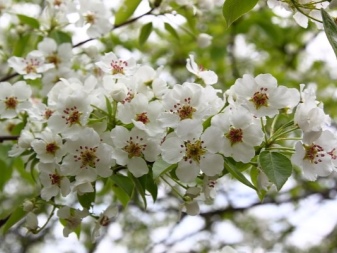

Foliar
The use of foliar dressing provides the most operational effect of mineral components on plants. In the process of flowering, it is recommended to spray with boric acid, it is previously diluted with plain water. Such a composition will be especially useful in cool and cloudy weather.
This procedure will allow plants to fully bear fruit, increase the level of yield, and contribute to an increase in the concentration of ascorbic acid in ripe fruits. A week after the beginning of flowering, you can spray with a composition with urea (1%). This composition not only nourishes the culture, but also protects it from various harmful organisms and diseases.
Remember that the effectiveness of such feeding will depend on the weather conditions under which the treatment was carried out. If the weather is too humid and warm, then all the liquid from the leaves of the trees will evaporate very quickly, and the beneficial substances simply will not have time to be absorbed into the plant tissues.
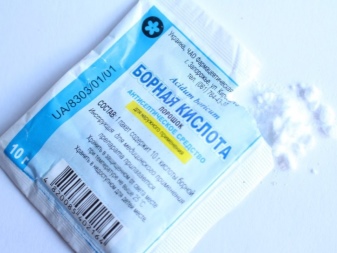
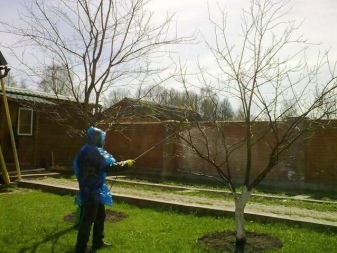
If after spraying it rains heavily, it will simply wash away all the nutrients introduced, while the effect will be minimal. Therefore, all treatments are best carried out at a moderate temperature in dry weather.
Useful Tips
When applying fertilizing for pears in the spring season, it is worth remembering some important recommendations. So, do not forget that adult crops need to be well fertilized every year. At the same time, the fertility and composition of the soil must be monitored. If you use different solutions and other liquid dressings, then the soil should be thoroughly loosened and a furrow should be formed.
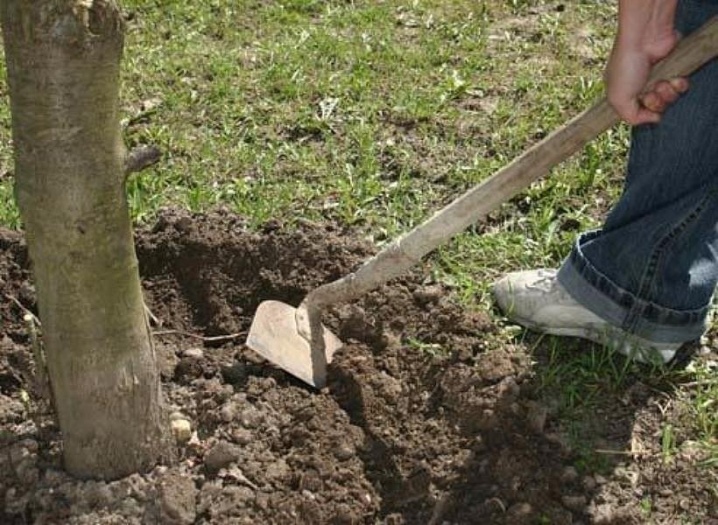
If you find problems with the development and growth of the tree, then you need to fertilize the plants with special foliar dressings. They help to ensure the speedy absorption of nutrients. At the same time, it is recommended to use such compositions in small concentrations. Foliar substances are best combined with conventional fertilizers to enhance the positive effect.
It is important to alternate between organic and ready-made complex formulations. This combination will provide adequate nutrition for plants, avoid the accumulation of nitrates in ripe fruits due to an excess of mineral elements.
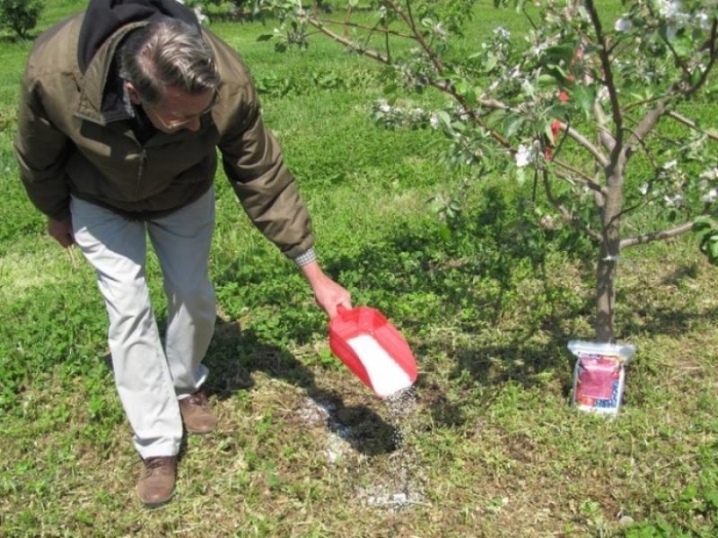






The comment was sent successfully.